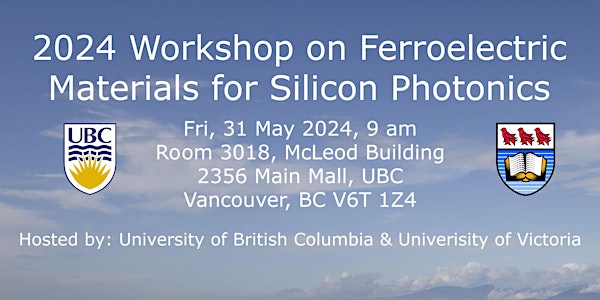TARGET AUDIENCE: Researchers in silicon photonics, integrated quantum photonics, optical communications
Workshop objectives
Silicon photonics has penetrated intra data center communications, and long distance coherent communications. Silicon-based modulators have limits in performance scaling, and addition of new materials should be considered to silicon processes in order to advance communications technologies, and to enable next generation applications such as microwave signal processing, quantum transduction, quantum communications, and quantum computing. The class of materials known as ferroelectrics (lithium niobate, barium titanate, and others) is identified as promising for all these applications. This workshop seeks to build a community which will solve challenges ranging from materials to high volume fabrication for commercial applications.
Organizers: Sudip Shekhar (UBC), Lukas Chrostowski (UBC), Rogerio de Sousa (UVic)
Topics:
- Thin-film lithium niobate (TFLN) and Barium titanate (BTO) overview, applications, fabrication, commercialization
- Panel discussion: Needs, candidates and compatibility for next generation modulators
- Material requirements for non-linear and quantum optics
- Material discovery targeting low optical loss, strong non-linearity and strong electro-optic effects
- Fabrication processes for co-integration with silicon photonics
Lab tours:
- Veeco Instruments GENxplor R&D Molecular Beam Epitaxy (MBE) system, for the growth of oxide thin films, including ferroelectrics
- JEOL JBX-8100FS 100 keV Electron-beam lithography system, capable of writing features as small as 5 nm on wafers up to 200 mm.
- Vanguard Automation Sonata 1000, for hybrid integration of photonic materials using Photonic Wire Bonds
